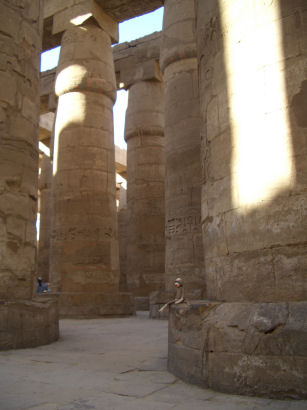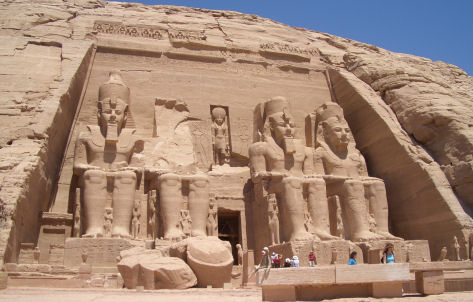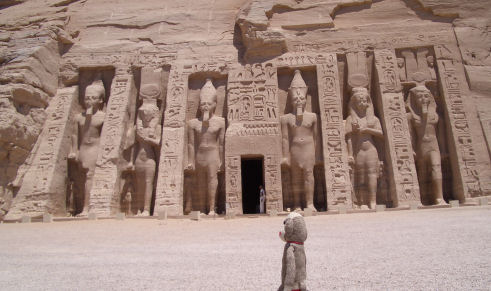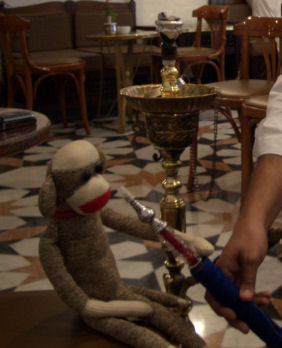
Here I sit amid the 134 columns of the Great Hypostyle Hall which is part of the Precinct of Amun-Re, the largest of the four main areas that make up the immense Karnak Temple Complex. The Hall was begun by Pharaoh Seti I and finished by his son Pharaoh Ramesses II. Both the raised relief on the columns by Seti I and the sunk relief of Ramesses II are marvelous to behold.
Here stands the Great Temple at Abu Simbel, dedicated to the gods Amun Ra, Ra Harakhti and Ptah. This is one of two temples located here. The twin temples were carved in the thirteenth century B.C.E. during the reign of Pharaoh Ramesses II as a monument to himself and his queen Nefertari. All four of the colossal statues represent Pharaoh Ramesses II.
The ancient Egyptian architects positioned the axis of the temple in such a way that twice a year, on October 20 and February 20, the rays of the sun would penetrate the temple sanctuary and illuminate the sculptures of the deities on the back wall, except for the statue of Ptah, a god connected with the Underworld, who always remained in the dark.
I feel a bit like Waldo in this photograph. Can you find me?


Here is the other temple at Abu Simbel dedicated to the goddess Hathor and Pharaoh Ramesses II's chief consort, Nefertari. The Colossi at this temple represent Pharaoh Ramessess II and Nefertari. Of note is that, for the first time in Egyptian history, both the Pharaoh and his consort are depicted as the same size.
The entire Abu Simbel temple complex was painstakingly moved in the 1960's to an artificial hill to avoid being submerged during the creation of Lake Nasser.
While in the Khan El-Khalili souq in Cairo, I relax with a shisha in a local coffeehouse.
The great Egyptian novelist, Naguib Nahfouz, often frequented these coffeehouses and his novel "Midaq Alley" was set in an alley in Khan El-Khalili.


